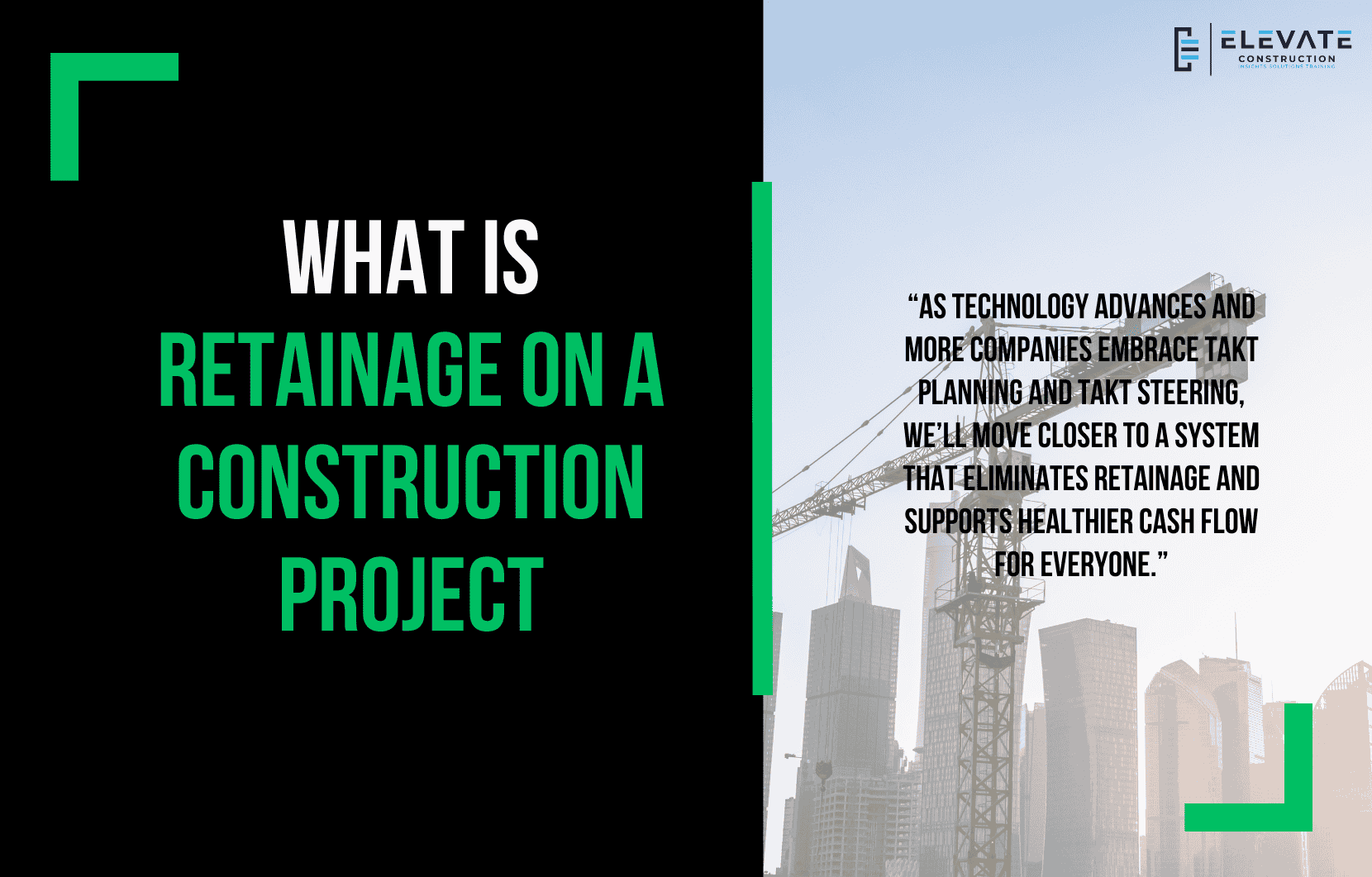What is Retainage on a Construction Project?
In this blog, I’m going to give you the exact definition of retainage, explain how it’s typically handled, and share some of my opinions on where the industry should go. If you want a quick and clear definition, you’re in the right place.
The Definition of Retainage
Retainage, also called retention, is a portion of the subcontractor’s contract amount that is withheld from progress payments. The purpose is to give the general contractor leverage to ensure the trade partner finishes their work in a quality manner and demobilizes properly.
It’s intended to provide security for both the general contractor and the owner. Retainage encourages subcontractors to complete their punch list items, prevents defects, and supports proper project closeout.
How Retainage Works
During the project, subcontractors bill monthly for completed work. The general contractor withholds a certain percentage typically around 10%. Retainage is released only after all change orders are reconciled, punch lists are complete, and closeout inspections are finished.
While this system protects project delivery, it creates a serious issue: subcontractors and even general contractors effectively become banks. They loan money sometimes millions for months without receiving interest. This practice strains cash flow, and as anyone in business knows, cash flow is king.
The Problem with Retainage
You can have a great product, the best team, solid profits on paper but if cash isn’t flowing into your bank on time, the business is at risk. Delayed payments and withheld retainage are some of the biggest threats to subcontractors’ survival.
A Better Way Forward
So, what’s the alternative? At Lean Built, we don’t hold retainage. Instead, we rely on strong preparation upfront, takt production systems, and zone control.
With zone control, you don’t wait for one massive punch list at the end, you finish your work as you go, zone by zone. Eventually, with blockchain technology, payments will be tied to these smaller gates. Imagine this: once a work package is inspected and signed off in a zone, payment is made immediately 100%.
This approach would:
- Improve subcontractors’ cash flow.
- Eliminate the need for retainage as leverage.
- Ensure quality and completeness throughout the project.
We’re not there yet, but the future of construction payments lies in collaborative trust, lean systems, and real-time verification.
Final Thoughts
I’m not saying you should ignore your current contracts or stop using retainage tomorrow. But I am inviting the industry to shift toward a more collaborative and financially sustainable model.
As technology advances and more companies embrace takt planning and takt steering, we’ll move closer to a system that eliminates retainage and supports healthier cash flow for everyone.
That’s retainage in a nutshell and a glimpse at where we could go as an industry.
If you want to learn more we have:
-Takt Virtual Training: (Click here)
-Check out our Youtube channel for more info: (Click here)
-Listen to the Elevate Construction podcast: (Click here)
-Check out our training programs and certifications: (Click here)
-The Takt Book: (Click here)
Discover Jason’s Expertise:
Meet Jason Schroeder, the driving force behind Elevate Construction IST. As the company’s owner and principal consultant, he’s dedicated to taking construction to new heights. With a wealth of industry experience, he’s crafted the Field Engineer Boot Camp and Superintendent Boot Camp – intensive training programs engineered to cultivate top-tier leaders capable of steering their teams towards success. Jason’s vision? To expand his training initiatives across the nation, empowering construction firms to soar to unprecedented levels of excellence.
On we go

